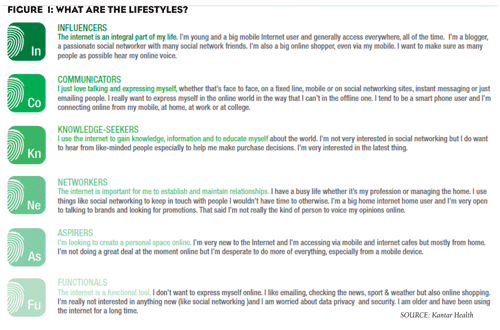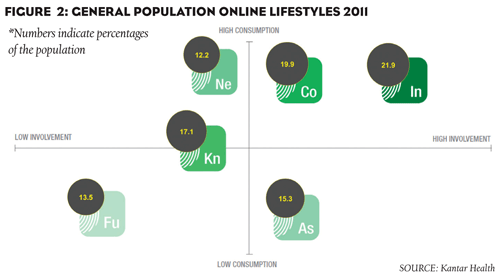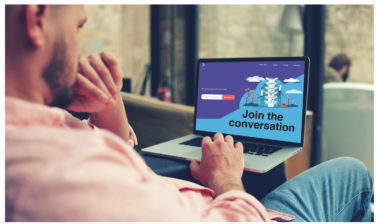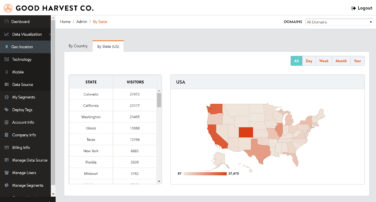Given that health is an innately social area, the proliferation of social networks centered on medical care over the last few years has been no surprise. Because these networks allow professional health workers and patients to connect and share knowledge quickly and because services that were once only available at a doctor’s office or hospital are also now available on-demand using mobile devices and online technologies, it is also inevitable that physicians in many geographies are now spending more than 40 hours a week online* as opposed to a couple of hours a week at most a decade ago. Even in geographies where mobile phone usage is still frowned upon in hospitals or coverage is still patchy (such as the UK), over two-thirds of doctors are also accessing the Internet via smartphones and even using data sent in by health workers via phones with adapted software to test for a myriad of symptoms, including serious diseases like cancer. That figure can rise to over 90% in many parts of Asia* while specialists in oncology, infectious diseases and general surgery have also been labelled “super users” in various WPP surveys.**
DIGITAL LIFESTYLES
Obviously, all of this has had implications on the pharmaceutical industry’s approach to targeting doctors and it is increasingly important for pharma companies to understand exactly how doctors consume information and communicate digitally. This prompted a “survey within a survey” into doctors’ digital habits as part of our annual Stakeholder Effectiveness survey. The study reached out to more than 1,500 general practitioners and oncology specialists across the U.S., France, Germany, Italy, Spain and the U.K. The questions were based on “Digital Life,” a survey specifically designed to build distinct consumer segments in the digital world that includes the segments seen in Figure 1.
We ranked physicians to these segments according to their frequency of use and common online activities, their agreement or disagreement with statements relating to online usage, ranking of online activities in terms of personal importance, age and gender. We then compared the segmentation achieved with the TNS-owned Digital Life study, which covered almost 50,000 interviews throughout the world among the general population in 2010. This gave us a sense of how the physicians differed from members of the general public in their digital habits.
It is interesting to see how segments comparable in age and gender yield very different results for the physicians. The general population is fairly evenly spread among the six segments. PCPs and specialists, however, cluster heavily in the Functional and Knowledge Seeker categories, with a far smaller percentage in the Aspirational segment. Oncologists are more Networking-oriented than PCPs, and their score here is more in line with the general public’s score. This might not be surprising in itself, but it does have important implications for engaging specialists.
ONLINE EVERYWHERE
Online is most definitely omnipresent in our physicians’ lives, but they see digital communication as a means to an end. To drill down a little deeper, we examined three of the segmentation types more closely.
First, we looked more closely at the two highest scoring groups to try and draw conclusions about how best to engage them in an online space. The largest group for both PCPs and specialists—the Functionals—showed an almost equal gender split. They tended to be older than the other respondents—an average of 44 years old. Their usage was medium to high, with most going online at least once a day. However, their involvement and consumption are notably low and center mainly on email. This group raised concerns about data protection (as would be expected in a highly regulated sector) but, more tellingly, also felt that the Internet had no place in improving their relationships with others. There is no substitute for personal contact with this group, and sales people would therefore almost certainly have to supplement online information with offline engagement to ensure the messages get through. Over 40% of respondents fell into this category. Although the segment will probably dwindle over time, it is too large to ignore.
Second, we looked at the Knowledge-Seekers—a slightly smaller but still significant concentration encompassing almost a third of physicians. This group had more males than females. Their digital consumption was higher than the Functionals, and they clearly see the Internet as a place to express themselves (they use social networks and email regularly as well as browsing) but they still have the concerns about data protection that come from working in such a regulated industry. As heavy users, they appreciate well-thought-through, well-established online platforms. Because of their low involvement levels, however, it’s important to supplement online information to ensure maximum absorption of key messages. They value personal contact, so the best way to engage them is probably to show them exactly where to find the right information online.
Third, we revisited the Communicators’ results. This group, the second-smallest in the sample, has the ideal profile for absorbing online information: They access the Internet frequently and have high consumption and involvement rates. They are less keen on email but otherwise are eager to communicate via online channels. They don’t mind personal contact but they don’t need it. Although this group is currently small, other surveys suggest that this will soon be the dominant, certainly among younger physicians.
OPTIMIZING THE CHANNEL
To sum up our findings, it’s clear that effective communication with physicians has to involve online as a channel now and that segmenting effectively in the online space is the key to medium-to long-term success. While Functionals still enjoy personal contact, other studies indicate that their greatest challenge is time, making that personal contact hard to come by. Because the Functionals in our sample were older, this group will naturally diminish as members retire. We anticipate that the physician group will increasingly resemble the general population— apart from the high number of Knowledge-Seekers. Knowledge- Seekers (a third of your potential customers) already use and value the Internet: The challenge here is to make sure they find what they are looking for. Communicators, on the other hand, are a small group, not yet big enough to really affect your bottom line. But tapping into this definitely growing group, and providing them with what they need, will help increase your sales very soon—things move quickly in the online world.
The lesson is simple: granular segmentation illuminating which stakeholders need which kind of information from which source at what time is a challenge but will give you the ultimate marketing advantage.
*All Global research paper March 2010
**WPP focus group data, 2010
FIGURE 1:

FIGURE 2:







